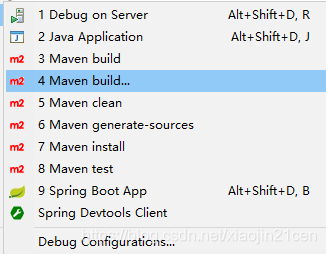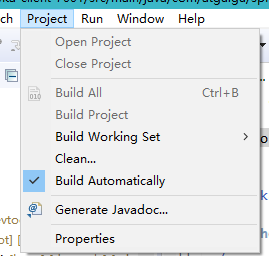文章目录
一、maven 插件 springloaded
1.1、添加依赖
在 spring-boot-maven-plugin 插件配置中添加 springloaded 依赖。
<build>
<plugins>
<plugin>
<groupId>org.springframework.boot</groupId>
<artifactId>spring-boot-maven-plugin</artifactId>
<dependencies>
<dependency>
<groupId>org.springframework</groupId>
<artifactId>springloaded</artifactId>
<version>1.2.5.RELEASE</version>
</dependency>
</dependencies>
</plugin>
</plugins>
</build>
1.2、启动
mvn spring-boot:run
必须通过此命令启动应用, 修改代码或页面才会更新。
操作步骤如下:
(a)、选中工程,右键操作如图所示:

(b)、输入 spring-boot:run 命令:

1.3、注意事项:
-
此方式 只对
mvn spring-boot:run命令启动的应用有效,而对直接运行 SpringApplication.java 启动应用无效 。 -
如果发现没有热部署效果,则需要检查 IDE 有没有打开自动编译:
Idea 配置的设置:

eclipse 的设置:

-
如果使用 Thymeleaf 模板引擎,需要把模板默认缓存设置为 false
在 application.properties 中添加:
#禁止thymeleaf缓存(建议:开发环境设置为false,生成环境设置为true ) spring.thymeleaf.cache=false
二、 依赖 spring-boot-devtools 热部署模块
2.1、添加依赖
pom.xml 添加依赖:
<!-- 热部署模块 -->
<dependency>
<groupId>org.springframework.boot</groupId>
<artifactId>spring-boot-devtools</artifactId>
<optional>true</optional> <!-- 这个需要为 true 热部署才有效 -->
</dependency>
2.2、启动
通过项目主程序 SpringApplication 入口启动。修改文件后,自动编译加载生效。